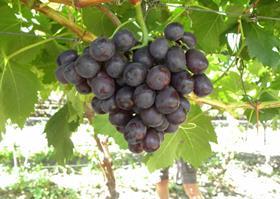
The South African table grape export crop is predicted to drop further, as evidence of a lower crop than was expected is presented in the Orange River region.
In other regions, with the exception of the north, the continuing drought is making it difficult to make accurate predictions.
After exporting 67.5m cartons last year, the South African Table Grape Industry (SATI) is now predicting that the crop may fall between 55.4m cartons and 60.3m cartons.
At worst this year’s export volume could be 12m cartons less than last year, while at best it will be around 7m cartons less.
SATI said lowering expectations in its second official forecast of the season are due mainly to a drop in the Orange River Region - the result of delayed ripening and lower bunch weights.
SATI noted that although the South African table grape season started normally from the earliest Northern Provinces Region, harvesting in the Orange River region has seen a delay of between 7-10 days in the ripening of grapes with lighter bunch weights.
“The next couple of weeks of packing will be shorter due to the public holidays over the Christmas period,” said SATI. “Industry experts however expect that despite the delay in ripening, grapes will not be delivered in peaks but will be evenly spread throughout the coming weeks.”
The organisation also noted that the extreme heat during week 49 caused damage to grapes in parts of the Olifants River region. This region also saw a further cutback in water allocations because of the drought in the Western Cape region. “This has been taken into account in the updated estimate,” added SATI.
According to SATI, the estimate for the Berg River and Hex River regions remain the same for now, with the possible effect of the drought already accounted for. It is still too early to make an accurate prediction of the harvest in the last two regions.
“Producers advised us they will endeavour to meet programs and contracted business while focusing on the well-known South African quality offering and taste,” said Willem Bestbier, chief executive officer of SATI.
“Crop estimates are done in co-operation with industry experts who are in close contact with growers in all regions, with the expectation that the best information available was used,' he added. 'This structure enables SATI to be more responsive to in-season developments and deviations.”
As the drought in the Cape regions continues it is clear that all table grape and deciduous growers are facing major challenges.
With the Cape being a winter rainfall region, and if normal summer rainfall patterns is experienced this year, it is not expected that major rainfall will occur until April next year. This will put existing water resources under further strain.
The only region which is likely to exceed last year’s export volume is the northern region, which expects to export between 500,000 and 1m cartons more this season. All the other regions will experience a drop in export volumes.
The export season started only three weeks ago and is expected to carry on to March.



